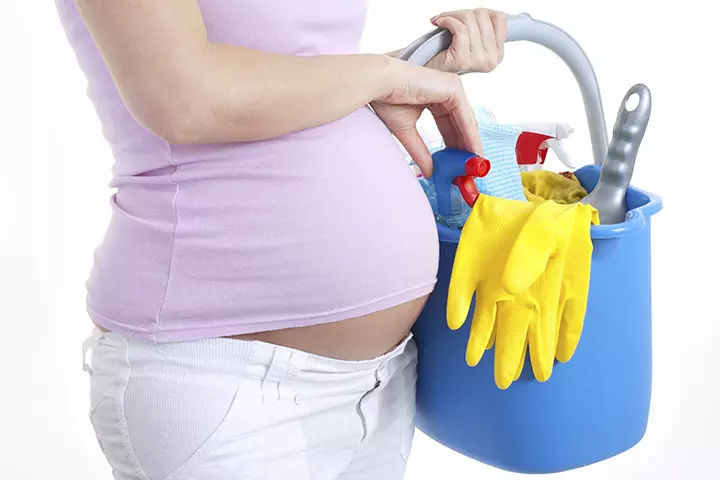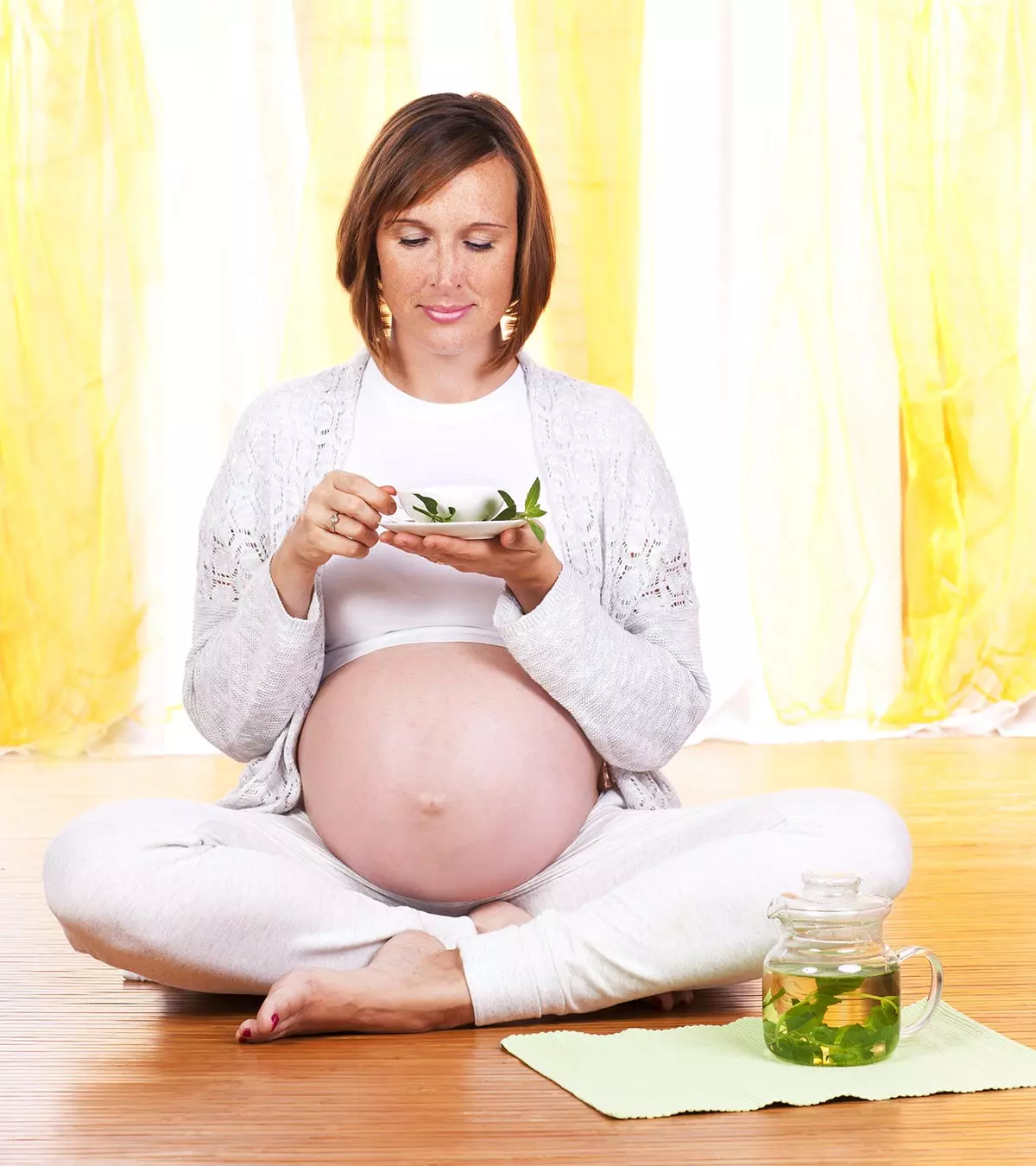
Image: Shutterstock
Home remedies for abortion are unsafe methods of abortion, and it is not recommended or scientifically backed by any medical authority. The World Health Organization (WHO) defines unsafe abortion as terminating a pregnancy with a non-recommended method or by an untrained person or both (1).

Nearly 47,000 women die due to unsafe practices for abortion each year (2). According to the WHO, abortion with caustic substancesiChemicals that may have the ability to burn or corrode. and traditional concoctions is dangerous and less safe (3). You may consult the healthcare provider to know your options to terminate the pregnancy if you consider natural methods or home remedies for abortion.
Read on to know the risks and complications of home remedies for abortion and safe abortion methods to consider.
Key Pointers
- WHO does not recommend home remedies for abortion and considers them unsafe.
- Ingesting toxic fluids or using unprescribed medicines in the vaginal route are common unsafe methods of abortion.
- Abortion caused by a home remedy raises the risk of incomplete abortion or uterine infection.
- Medical and surgical procedures are considered safe for abortion.
Commonly Practiced Unsafe Abortion Techniques
Some common methods of unsafe self-abortion or DIY abortion include (4):
- Drinking mixtures or concoctions (herbal teas) made using specific abortifacient herbs
- Ingesting toxic fluids with chemicals

- Insertion of herbal mixes or foreign objects into the vagina and the uterus
- Placing unprescribed or inappropriate medicines or capsules inside the vagina
- Inflicting trauma to the abdomen by falling or injury
- Practicing unsafe alternative medicine or folk medicine practices
These methods are not recommended by medical practitioners owing to the risks they pose to the woman and must be avoided.
Some of the significant risks associated with unsafe abortion are mentioned next.
- The biggest risk factor is the failure of the process of self-abortion, that is the continuation of pregnancy in spite of some bleeding happening when you try for a DIY abortion.
- An incomplete abortion is one of the complications of unsafe abortion. An abortion is termed incomplete when the fetus is expelled, but part or all of the placenta is retained (5). This condition demands medical intervention, and in the absence of the same, may lead to septic shockiLife threatening condition that occurs when the blood pressure drops down to dangerously low levels after an infection. , infertility, or even death (6).
- Infection in the case of certain home remedies that involve the insertion of surgical instruments, which is dangerous when practiced by an unskilled person. Even when the instruments are sterilized, insertion of foreign objects into the vagina or anus can be hazardous as it can damage the genital tract and increase the risk of sepsisiAn extreme and overactive bodily response to an infection. .
The US Center for Disease Control and Prevention (CDC) defines sepsis as the body’s extreme response to an infection, which can be a life-threatening medical emergency (7).
- Abortion is considered successful when there is bleeding, which is the general aim of most home remedies. However, excessive bleeding or hemorrhageiLoss of blood from the broken blood vessel. in the case of some home remedies could pose a risk to life.
- Home remedies for abortion generally involve the use of herbs to develop concoctions and tincturesiConcentrated herbal or plant extracts mixed with alcohol. , which are unregulated, under-researched, and mostly unpredictable, increasing the risk of toxicity (8). A study demonstrated parsley apiole intoxication in women who aborted successfully, yet died, having suffered massive internal bleeding, convulsionsiRapid and involuntary muscle contractions that lead to rapid and rhythmic shaking of the body, especially limbs. , oliguriaiUrine output that is lesser than 400ml/day or 20ml/hour. , and pyrexiaiIncrease in body temperature. (9).

Other risks of unsafe abortions could include a (10):
- Lack of immediate medical intervention in the case of an emergency, such as excessive bleeding.
- Risk of genitourinary disorders, such as pelvic inflammatory disease (PID), which could increase the risk of infertility or ectopic pregnancyiA life-threatening form of pregnancy where the egg fertilizes on the fallopian tubes rather than the uterus leading to blood loss. .
Therefore, home remedies for abortion may or may not be effective, and their safety stands questionable. Lack of awareness about these complications could land some women in situations that need immediate medical attention.
When To See A Doctor?
See the doctor as soon as you know you are pregnant and want to terminate it. If you have already attempted a home abortion, it is advisable to seek medical help immediately, especially if you have the following symptoms:
- Heavy bleeding that may soak a pad under an hour
- Severe abdominal or pelvic cramping
- Bloody stool, urine, or vomit
- High fever and chills
- Extreme sweating

- Numbness or shivering
Have someone accompany you until the medical care center. To avoid any health risks, you should consider safe medical methods for abortion.
What Are The Safer Options For Abortion?
Induced abortions are considered safe if they are done using a method recommended by the WHO.
Such abortions can be done using drugs (medical abortion) or a simple outpatient procedure (surgical procedure) by a trained medical practitioner (3).
- Medical abortion involves the use of medications, some alone or in combination with others, usually taken 24 to 48 hours apart, to induce a miscarriage. The most widely used one is a systematic plan composed of mifepristone with misoprostol. The WHO recommends this combination, with a primary dose of mifepristone followed by misoprostol 36 to 48 hours later. This is done for early medical abortion (11). According to the Guttmacher Institute’s periodic census of all known abortion providers, medication abortion accounted for 53% of all abortion cases, making it the most popular choice. This marked a significant increase from 39% in 2017, the last year Guttmacher reported these data.
 Quick tip
Quick tip- Surgical abortion involves a minor surgical procedure, such as dilation and evacuation (D&E) or aspiration abortion, which is done in a day. It can be performed if less than 12 weeks have passed since the first day of the last menstrual cycle. The procedure is performed in a medical set-up and involves the use of local anesthesia and oral pain-relieving medications (12).

When the doctor uses one of these methods, then the chances of a successful abortion are high.
How Do You Know You Have Had A Successful Abortion?

If the doctor has prescribed tablets for abortion, you should do the necessary follow-up sonography and urine test to confirm the process is complete. In a surgical termination, after the procedure, the bleeding settles in a few days and then there is no bleeding or any other symptoms such as fever, pain etc.
 Quick tip
Quick tipLegal Aspects of Self-Managed Or At-Home Abortion
Owing to the risks and possible ineffectiveness, self-induced abortions conducted without medical guidance are mostly considered illegal under the US FDA regulations (13). Even when you are opting for a medically supported abortion, you need to understand the abortion laws in your country before making a decision to avoid indulging in illegal methods.
Frequently Asked Questions
1. Are there any psychological or emotional effects associated with home remedies for abortion?
Terminating a pregnancy can be stressful and emotional, regardless of the method used. Using a home remedy for abortion may increase anxiety and fear about the process, especially if it is ineffective or causes complications.
2. What are the cultural and religious beliefs surrounding home remedies for abortion?
Cultural and religious beliefs surrounding home remedies for abortion may influence abortion attitudes and behaviors. Some cultures and religions may have beliefs that support the use of traditional remedies or home remedies for abortion, while others may strongly oppose it. It is important to consider individual beliefs and values when deciding on pregnancy termination.
3. Can home remedies for abortion be used for late-term pregnancy?
Using home remedies for the termination of late-term pregnancy may not be safe. At this stage, a medical or surgical procedure is necessary to terminate the pregnancy and prevent serious health risks to the individual.
Home remedies for abortion are unsafe, and they can result in complications that can cause permanent damage to the reproductive system and health. Using alternative pregnancy prevention methods such as toxic fluids, herbal remedies, folk remedies, unprescribed medicines, unprescribed homeopathic remedies, abdominal trauma, and the insertion of foreign objects and herbal mixtures through the vagina are not recommended by experts. These methods can cause incomplete abortion and infections in women that require medical care. You may contact your doctor or a public healthcare provider for a safe abortion if you do not want to continue the pregnancy.
Infographic: Possible Risks Associated With At-Home Abortion
Despite the availability of various contraceptive measures, accidental pregnancies may occur. This may cause some women to resort to home abortion methods due to various factors. However, these methods are associated with potential complications like those listed in the infographic below.
Some thing wrong with infographic shortcode. please verify shortcode syntaxIllustration: How Safe Are Home Remedies For Abortion And Risks Involved

Image: Dall·E/MomJunction Design Team
References
1. Sharon Cameron.; Recent advances in improving the effectiveness and reducing the complications of abortion; National Center For Biotechnology Information (2018)
2. Safe and unsafe induced abortion; WHO
3. Key facts; Preventing unsafe abortion; WHO (2019)
4. L Haddad, N M Nour; Unsafe Abortion: Unnecessary Maternal Mortality; Rev Obstet Gynecol
5. Managing Incomplete Abortion; Midwifery Education Modules, 2nd Edition; WHO
6. Tiffany Murano and Adam Kenney; Management and Treatment of Septic Abortion; EMRA (2016)
7. About Sepsis; CDC
8. Ciganda C and Laborde A; Herbal infusions used for induced abortion; National Center For Biotechnology Information (2003)
9. Abortifacient; ScienceDirect
10. Risks; Abortion; National Health Services, UK (2016)
11. Thoai D Ngo et al.; Comparative effectiveness, safety and acceptability of medical abortion at home and in a clinic: a systematic review; WHO
12. Surgical Abortion (First Trimester); University of California San Fransisco
13. With Abortion Restrictions On The Rise, Some Women Induce Their Own; NPR (2019)
14. M Endle et al.;Telemedicine for medical abortion: a systematic review; Royal College of Obstreticians and Gynecologists.
15. Medical Abortion; Cleveland Clinic
Community Experiences
Join the conversation and become a part of our nurturing community! Share your stories, experiences, and insights to connect with fellow parents.
Read full bio of Dr. Sangeeta Agrawal
Read full bio of Swati Patwal
Read full bio of Rebecca Malachi
Read full bio of Aneesha Amonz

















